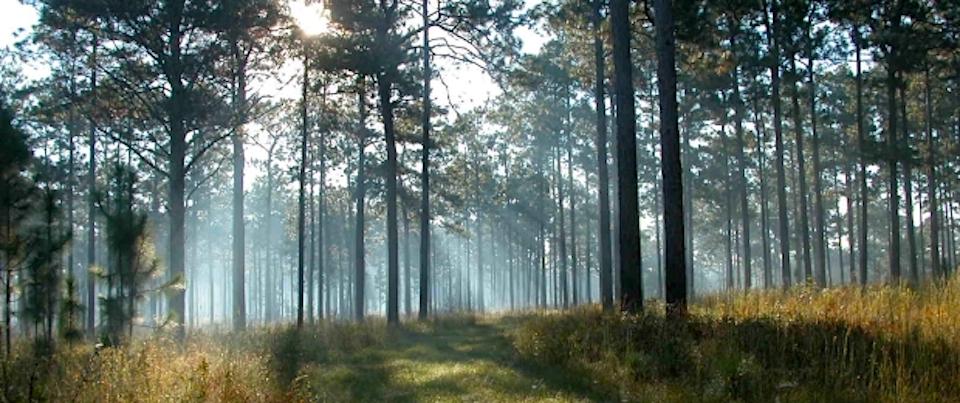
A mature Longleaf pine forest/National Fish and Wildlife Foundation, Christine Ambrose
A thaw in political brinksmanship that allows the partial government shutdown that's been in effect since before Christmas to be lifted might have come in time to save an estimated 25,000 Longleaf pine seedlings at Big Thicket National Preserve in Texas.
For years the National Parks Conservation Association has been marking the Martin Luther King, Jr., holiday weekend by planting Longleaf pine seedlings in a portion of the national preserve that has been identified for reforestation. This year the group, which has planted nearly 160,000 seedlings in Big Thicket over the past nine years, planned to plant 15,000 seedlings, but the government shutdown forced cancellation of the event. Another 10,000 seedlings were to be planted by others.

Closeup of a Longleaf pine at Big Thicket National Preserve/NPS
"As much of the native forest was removed by industry prior to 1974, reforestation is an important part of the park’s mission to maintain biodiversity," Erika Pelletier, the program manager for NPCA's Texas office, said in an email. "The Longleaf pine is slow-growing tree that originally grew in the region. We plant them since these trees are best suited to withstand hurricanes and other types of severe weather, are fire adapted as wildfires are an important part of the ecosystem in the area, and creates critical habitat for endangered species like the Red Cockaded Woodpecker.
"We estimate that 30,000 acres are designated for reforestation in the park site, and that over 50 acres were set aside for our canceled tree-planting event on Martin Luther King Day," she added.
The seedlings need to be planted by late February, before the weather turns too warm. There was no word Friday whether the planting event would be rescheduled.
National Park Service staff at Big Thicket could not be reached to discuss the project. They were all furloughed. The following is from Big Thicket's website.
Two centuries ago, longleaf pine forests stretched across the southeast USA, from East Texas to Virginia. Longleaf pine (Pinus palustris) was the dominant tree species on an estimated 60 million acres, and an important part of the mixes of tree species on another 30 million acres. The US Fish & Wildlife Service has found more than 30 plants and animals associated with longleaf pine ecosystems, including the red-cockaded woodpecker, Texas trailing phlox, Louisiana pine snake, and gopher tortoises, all of which are now listed or being considered as threatened or endangered. Today, longleaf pine ecosystems are found on just over 3 million acres, or 3%, of its historic range, primarily in scattered tracts on federal, state, and conservancy lands. Some private longleaf pine areas are protected by easements.
Longleaf pine are very dependent on fire in the ecosystem and are highly resistant to wildfire (pyrophytic). Historically they grew in large open stands with an understory of grasses, forbs, scattered shrubs, and oak trees also resistant to frequent fire cycles. They reach heights of 90 to 110 feet, have an extensive tap root system that firmly anchors the trees during hurricanes, and can grow on poorer soils and sandier sites than most other pines and hardwoods. The extremely long needles were used by Native Americans in the ancient craft of coiled basket making. There is a concerted effort across this specie’s range to restore areas to longleaf pine habitats that would then also benefit the associated flora and fauna.


 Support Essential Coverage of Essential Places
Support Essential Coverage of Essential Places






